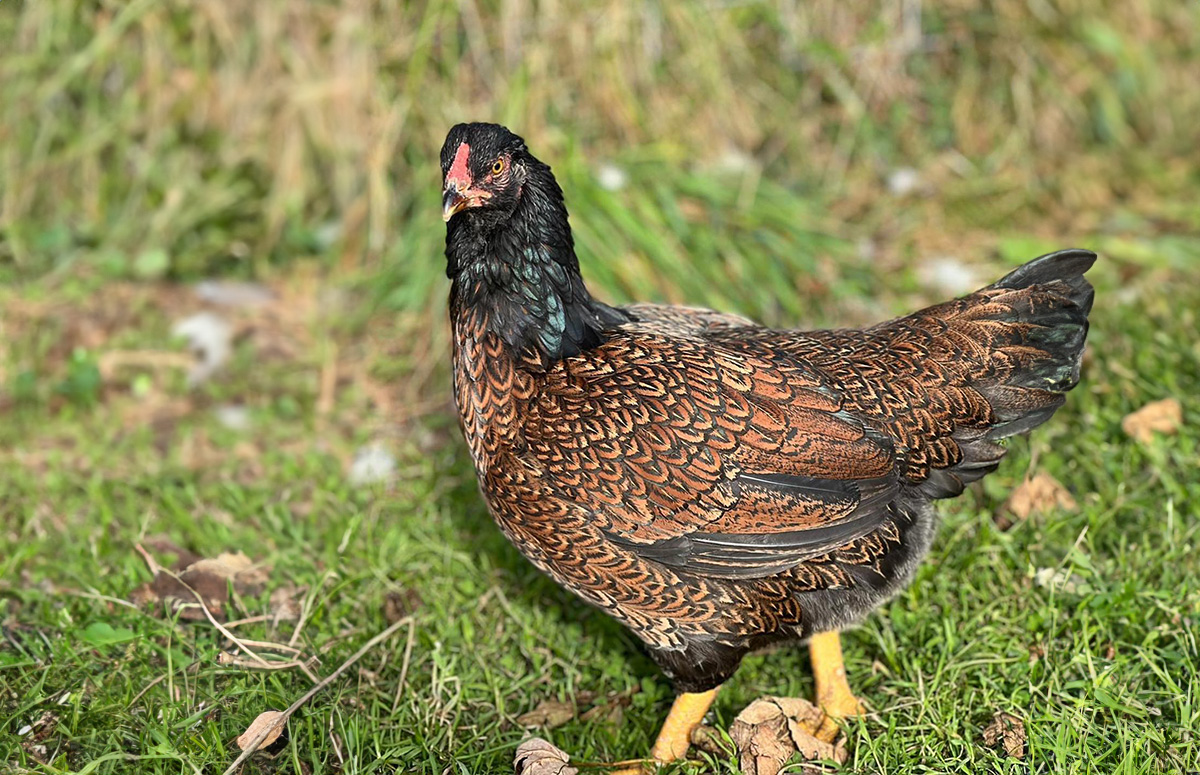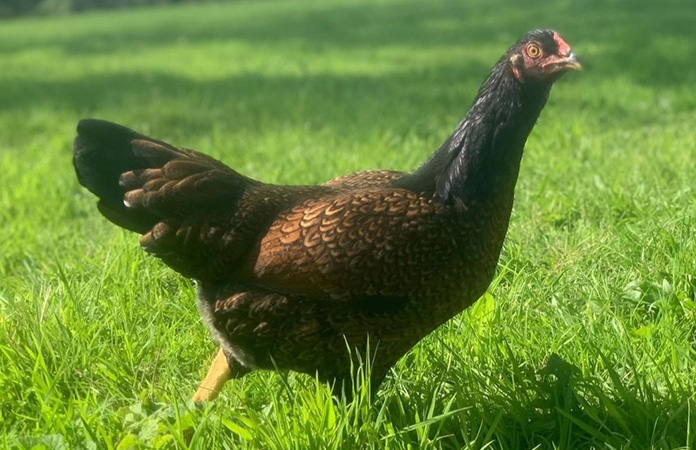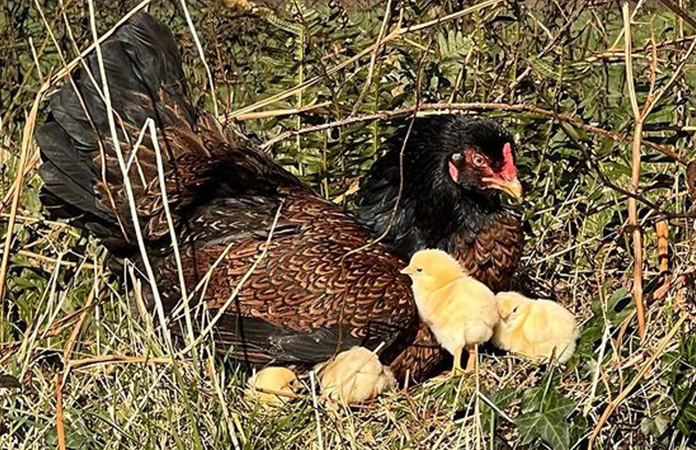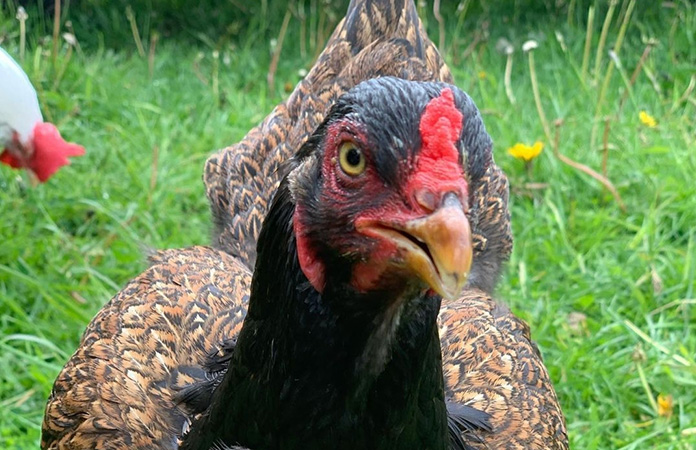Cornish Chicken (Indian Game): Raising Tips and Care

The Cornish, formerly known as the Indian Game, is a chicken breed that is both stunning and high-maintenance. They are an excellent choice for those raising chickens for meat but require a bit more attention than other breeds if you want to keep them as backyard pets.
Nonetheless, Cornish chickens can be a fun addition to your flock if you have the time to devote to their care.
- Cornish hens lay up to 80 eggs yearly
- Mainly kept for its meat production
- Not beginner friendly
- Need more care and attention
| Eggs | Up to 80 eggs per year |
| Egg Color | Light brown |
| Egg Size | Small |
| Weight | 6 – 8 lbs |
| Hardiness | Not especially hardy |
| Temperament | Friendly but high in maintenance |
| Beginner-friendly | No |
| Color | Varies |
Characteristics
A Cornish chicken is a large, muscular bird with unusually broad breasts. They have a short, stocky build and short legs. The feathers of the Cornish are thin and hard, lacking down, giving the breed a sleek and streamlined appearance.
Regarding color variations, there are several recognized by poultry organizations worldwide. In the United States, the Cornish is recognized in four colors: the original dark, white, white-laced red, and buff, which was added in 1938.

Overall, the Cornish chicken has a striking and distinctive appearance, with its broad breast, muscular build, and sleek feathers. They are an impressive addition to any flock and are well-suited for those looking to raise their meat.
Males weigh around 8 pounds and females 6 pounds, which is larger than many hybrid laying chickens.
Egg Production
The Cornish chicken is not known for being a good egg layer. In fact, it is primarily raised for its meat rather than its egg-laying capabilities. Hens may lay about 80 small and light brown eggs per year, which is significantly lower than many other chicken breeds.
They also need more care than most other breeds, as they are highly susceptible to parasites and require more shelter. Combined with their low egg production, backyard chicken keepers don’t keep this breed for eggs.
As a result, they are not commonly used for eggs. However, if you are interested in raising your own meat, then the Cornish could be a great choice for your flock.

Meat Production
The Cornish chicken’s popularity as a meat breed has significantly impacted the poultry industry. In fact, it led to the development of commercial broiler chickens through cross-breeding with other fast-growing breeds, particularly the White Cornish.
These hybrids have become the backbone of the commercial poultry industry due to their faster growth rate and more tender meat. Unfortunately, this shift in demand has caused a decline in the Cornish chicken population, and it is no longer as popular as it once was as a show bird.
The Cornish is highly prized for its meat. Due to its muscular nature, young birds can be harvested early to produce a small, tender, and flavorful chicken. The meat is white and has a delicate flavor that is considered superior to that of other breeds.
When harvesting, it’s important to note that Cornish chickens are typically processed younger than other breeds, around 6 to 8 weeks old. This is because they reach their optimal size and weight at this age, and any longer will result in tougher and less flavorful meat.
Cornish chickens are highly valued for their meat, and their breeding has contributed significantly to the commercial poultry industry.
Personality
If you plan not to keep Cornish as meat birds but want to add them to your backyard flock, that’s a great idea. But there are some things to keep in mind.
Firstly, they are highly susceptible to parasites, so they must be checked and treated regularly. Additionally, because of their larger size and weight, Cornish chickens may have difficulty moving around and may require extra care to prevent leg problems.

Cornish chickens require lower roosts due to their heavy body. They may break a leg if they have to jump from high roosts. If you plan to keep Cornish chickens as backyard chickens instead of meat birds, make sure not to let them become overweight. Overweight chickens can develop health issues.
Another issue that can arise with Cornish chickens is their susceptibility to heat. Because they have a large body mass, they may have trouble regulating their body temperature during hot weather. Providing them with plenty of shade and access to cool water during the summer is important. They thrive best in normal temperatures, not too hot nor too cold.
Cornish chicken: Breed profile
The Indian Game, later renamed Cornish in the US, originated in Cornwall, England, in the early 1800s. It was primarily bred for cockfighting, a popular sport in the region. The original Cornish chickens were known for their gamey qualities and their aggressive nature. As cockfighting became illegal, breeders shifted their focus to developing the Cornish as a meat breed.
It’s believed the Cornish was created by crossing various Asian chicken breeds like the Malay and Asil. Although the breed got renamed from Indian Game to Cornish in the US, the rest of the world mostly still uses the ‘old’ name Indian Game.
In the late 1800s, the Cornish was introduced to America, where it gained popularity as a meat bird. Over time, breeders worked to improve the Cornish’s size and meat qualities, leading to the development of the modern Cornish breed we know today. The Cornish has played a significant role in the commercial poultry industry, particularly as the foundation for the Cornish Rock broiler.
Summary
The Cornish chicken is a dual-purpose breed that is known for its excellent meat quality. It has a muscular build, short legs, and a broad breast. While not a prolific egg layer, the Cornish is popular for backyard enthusiasts and small-scale farmers who want to raise their own meat.
They require extra care due to their susceptibility to parasites, leg issues, and the need for lower roosts. The breed’s popularity as a meat bird led to the development of the commercial broiler industry.
Credits Featured Image: @maesnewyddpermaculture (IG)






















